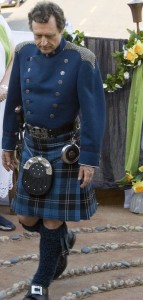Secret Garden of the Feminine
Goddess Awakening
Humanity stands at the dawn of a new millennia with global information at our fingertips. There are now countless men and women who, when thinking of a nurturing, life-giving, creative presence–a deity who loves unconditionally–inevitably envision a maternal presence. It naturally follows that for us, the Great Mother is the heart of our worship and prayers. The Goddess is the feminine expression of Divinity. Numerous people have found the Goddess as a result of a long, arduous spiritual search.
The Goddess offers a spirituality, a tradition, a religion of celebration and regeneration in this world, rather than an other-world redemption. Through Gaia, the Earth Mother, she reveals to us the beauty and magnificence of our own divine nature. We see her countenance reflected in the play of the ocean, the majesty of a tree, the dancing colors of a sunset. In those moments we celebrate our oneness with nature and know, undoubtedly, our own amazing divinity.
In WomanSpirit Rising: A Feminist Reader in Religion, a collection of feminist essays, theologian Carol Christ’s brilliant discourse titled “Why Women Need the Goddess: Phenomenological, Psychological, and Political Reflections” states, “The simplest and most basic meaning of the symbol of Goddess is the acknowledgment of the legitimacy of female power as a beneficent and independent power.” The woman who has reclaimed the Goddess “is saying that the divine principle, the saving and sustaining power, is in herself, that she will no longer look to men or male figures as saviors.”[1] The lineage of a “male savior” mythology is in abundant evidence in contemporary fairy tales. In most of those stories, we find the obedient daughter passively waiting for her prince to come and rescue her.
Women’s spirituality is the natural offspring of feminism. As women continue to break the barriers restricting us, as we take our place in the world as the true partners we were meant to be, we have sought a symbol for this powerful feminine energy. After achieving economic and political empowerment, many women are turning within and seeking spiritual empowerment. What we’ve found is that the concept and imagery of a male God is no longer adequate to represent us on a spiritual plane. We discovered (some might say remembered) the rich, multicultural, many-faceted Goddess known since ancient times as “She of Ten Thousand Names.” Awakening to the knowledge of Goddess and Goddess “herstory” dissolves the patriarchal distortions that restrict women in countless ways.
Others have reclaimed the archetype of the Great Goddess as the symbol of women’s growing power both in themselves and in the world at large. In Megatrends for Women, Patricia Aburdene and John Naisbitt state, “Whether a woman espouses traditional religion, New Age spirituality or Atheism, her sense of personal power is enhanced by the mythology of the Goddess, which awakens confidence, belonging and self-esteem.”[2]
Identification with the divine feminine is an unparalleled act of empowerment. Miranda Shaw, discussing the gynocentric view of Tantric Buddhism in Passionate Enlightenment, says, “Women must discover the divine female essence within themselves. This should inspire self-respect, confidence, and the `divine pride’ that is necessary to traverse the tantric path. This pride is an antidote to self-doubt and discouragement. . .When a woman reclaims her divine identity, she does not need to seek outer sources of approval, for a bottomless reservoir of self-esteem emanates from the depths of her own being.”[3]
Modern women have taken up the ancient symbol of the Goddess as an emblem of their own undeniable feminine power. As the collective unconscious continues to awaken to this timeless and essential archetype, society will once again have a context for the balance needed to heal both the planet and the fractured psychological landscape of society.
Psychologists and other therapists are looking at the various archetypes of goddesses as a tool for understanding the psyche of women and how they develop relationships. In Goddesses in Everywoman, Jean Shinoda Bolen, M.D., creates an extraordinary psychological picture, based on the better-known pantheon of Greek goddesses, by means of which women can begin to look at the energies and patterns in their lives. “Knowledge of the ‘goddesses’ provides women with a means of understanding themselves and their relationships with men and women, with their parents, lovers, and children. These goddess patterns also offer insights into what is motivating (even compelling), frustrating, or satisfying to some women and not to others.”[4] This is a new psychological perspective based on the diversity of women as opposed to previous theories that sought to define what a “normal” woman is. This important work, along with others such as Clarissa Pinkola Estes’s book Women Who Run with the Wolves, has given women stories and ancient archetypes by which we can begin to understand ourselves.
[1]. Carol Christ, “Why Women Need the Goddess: Phenomenological, Psychological, and Political Reflections,” in WomanSpirit Rising: A Feminist Reader in Religion, (San Francisco: Harper & Row, 1979), p. 277.
[2]. Patricia Aburdene and John Naisbitt, Megatrends for Women (New York: Villard Books, 1992), p. 244.
[3]. Miranda Shaw, Passionate Enlightenment (Princeton, N.J.: University Press, 1994), p. 41.
[4]. Jean Shinoda Bolen, Goddesses in Everywoman (San Francisco: Harper & Row, 1984), p. 2.
© Copyright 1995 Judy Tatum aka Xia except where otherwise noted. All rights reserved worldwide. This publication is protected under the US Copyright Act of 1976 and all other applicable international, federal, state, and local laws.



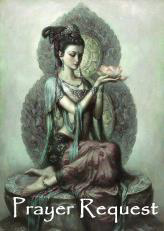
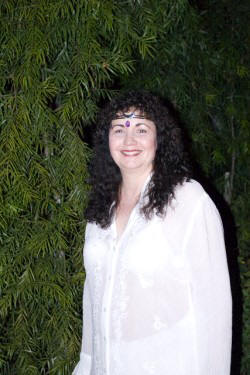 For almost two decades Rev. Xia has walked the path of the divine feminine, committed to her role as an inter-faith ambassador for the Pagan Community. Among her many articles, an essay entitled Paganism: Out of the Closet and into the Fire, originally written for her son’s school in Pasadena for a Diversity in Religion series, has been reprinted countless times. Additionally, she has written numerous mythological and ritual works centered around archetypal studies of the Goddess including Rites of Passage: A Goddess Ritual for Women, which aired on The Learning Channel–showing Pagan rites for Maiden, Mother, and Crone. She also produced and facilitated that segment for The Learning Channel. Additional articles include: Ritual and the Art of Alchemy, The Mythology of Nature, The Legacy of Creation Myths, The Myth of Matriarchy, and Secret Garden of the Feminine. She is completing a non-fiction book entitled, Feminine Alchemy: The Ritual Art of Cooking, a book of healing through Goddess archetypes which has been on the back burner for many years.
For almost two decades Rev. Xia has walked the path of the divine feminine, committed to her role as an inter-faith ambassador for the Pagan Community. Among her many articles, an essay entitled Paganism: Out of the Closet and into the Fire, originally written for her son’s school in Pasadena for a Diversity in Religion series, has been reprinted countless times. Additionally, she has written numerous mythological and ritual works centered around archetypal studies of the Goddess including Rites of Passage: A Goddess Ritual for Women, which aired on The Learning Channel–showing Pagan rites for Maiden, Mother, and Crone. She also produced and facilitated that segment for The Learning Channel. Additional articles include: Ritual and the Art of Alchemy, The Mythology of Nature, The Legacy of Creation Myths, The Myth of Matriarchy, and Secret Garden of the Feminine. She is completing a non-fiction book entitled, Feminine Alchemy: The Ritual Art of Cooking, a book of healing through Goddess archetypes which has been on the back burner for many years. My specific Priestess Path I wish to dedicate myself to is sacred circles. This means that my truest spiritual ecstasy comes from ritual in community with others. This is a large circle that includes not only planning and performing ritual, but also creating ritual art such as building altars, teaching ritual, making video…
My specific Priestess Path I wish to dedicate myself to is sacred circles. This means that my truest spiritual ecstasy comes from ritual in community with others. This is a large circle that includes not only planning and performing ritual, but also creating ritual art such as building altars, teaching ritual, making video…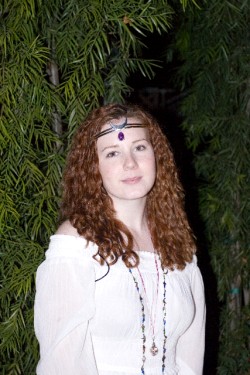 Marcella, our youngest priestess, has been a professional actor for many years. She is a graduate of the Los Angeles County High School for the Arts. Other training includes Viewpoints/Suzuki with Anthony Byrnes, Voice-Over Workshops with Sharon Mack, and the Royal Academy of Dramatic Arts in London, a Shakespeare Intensive. Her theater credits include The Cherry Orchard, A Midsummer Night’s Dream, and The Wizard of Oz. Her film credits include, Punch-Drunk Love, A Host of Trouble, and Kids in America. She has co-starred on various television shows, such as NCIS, Boston Legal, The O’Keefe’s, and Malcolm in the Middle. Awards encompass 1st Place in the 2005 and 2006 DTASC Shakespeare Competition / monologue, 1st Place 2005 RoleAbout / Cold Reading, 1st Place 2005 RoleAbout / Classical Monologue, and was the Silver Medalist ROP Outstanding Student in TV/Film.
Marcella, our youngest priestess, has been a professional actor for many years. She is a graduate of the Los Angeles County High School for the Arts. Other training includes Viewpoints/Suzuki with Anthony Byrnes, Voice-Over Workshops with Sharon Mack, and the Royal Academy of Dramatic Arts in London, a Shakespeare Intensive. Her theater credits include The Cherry Orchard, A Midsummer Night’s Dream, and The Wizard of Oz. Her film credits include, Punch-Drunk Love, A Host of Trouble, and Kids in America. She has co-starred on various television shows, such as NCIS, Boston Legal, The O’Keefe’s, and Malcolm in the Middle. Awards encompass 1st Place in the 2005 and 2006 DTASC Shakespeare Competition / monologue, 1st Place 2005 RoleAbout / Cold Reading, 1st Place 2005 RoleAbout / Classical Monologue, and was the Silver Medalist ROP Outstanding Student in TV/Film.
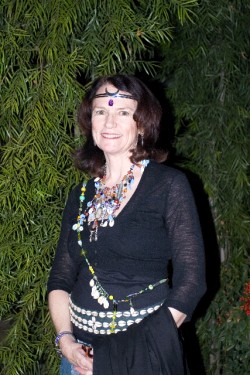 I have been following the path of the goddess for over 30 years. As an artist, I have always been interested in the mutual influence between the personal and political, private and communal, spiritual and artistic expression.
I have been following the path of the goddess for over 30 years. As an artist, I have always been interested in the mutual influence between the personal and political, private and communal, spiritual and artistic expression.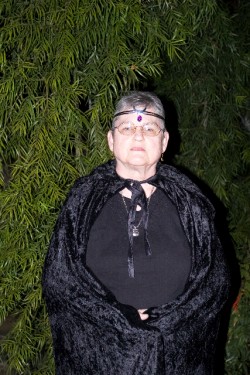 God was strictly male in the forties. And the males in my life were minor demi-gods to be obeyed without question. Father, priests, especially Monsignor, policemen, doctors–they protected me, taught me, molded me. My teachers (grade and high school) were Catholic nuns, but they were under the supervision and control of the priesthood.
God was strictly male in the forties. And the males in my life were minor demi-gods to be obeyed without question. Father, priests, especially Monsignor, policemen, doctors–they protected me, taught me, molded me. My teachers (grade and high school) were Catholic nuns, but they were under the supervision and control of the priesthood.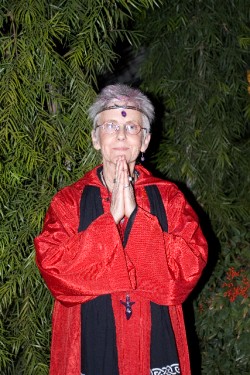 Introduction—the beginning February, 1986
Introduction—the beginning February, 1986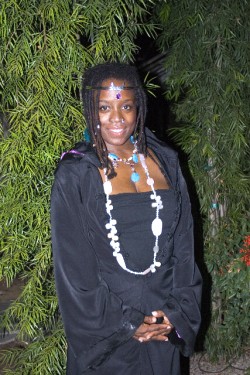 Haize Rosen has worked professionally as an actress, dancer and choreographer for 20 years. Haize is also an energy-light worker, certified in Thai massage and Hellerwork. To complement her work in the healing arts, Haize is a certified assistant mid-wife, and has a thriving doula practice. As a dancer, Haize has studied Balinese, The Orishas of both Africa and Brazil, and Classical Indian Dance in the style of Odissi. She has choreographed such renowned musicals as Guys and Dolls, Fiddler on the Roof, Little Shop of Horrors, and Grease. Haize recently wrote and starred in her one-woman shop, Country Colored Girl, which chronicled her family history in a small town in Alabama. She has studied ballet with Joy Finch, and acting at Lee Strausberg. Haize has worked rehabbing children at Juvenile Hall and taught theater and dance professionally in workshops throughout Los Angeles. The ordination onto her Priestess path in Temple of the Goddess is a culmination of her life’s work and provides an opportunity for Haize to apply her knowledge and skills in new and effective ways in the world.
Haize Rosen has worked professionally as an actress, dancer and choreographer for 20 years. Haize is also an energy-light worker, certified in Thai massage and Hellerwork. To complement her work in the healing arts, Haize is a certified assistant mid-wife, and has a thriving doula practice. As a dancer, Haize has studied Balinese, The Orishas of both Africa and Brazil, and Classical Indian Dance in the style of Odissi. She has choreographed such renowned musicals as Guys and Dolls, Fiddler on the Roof, Little Shop of Horrors, and Grease. Haize recently wrote and starred in her one-woman shop, Country Colored Girl, which chronicled her family history in a small town in Alabama. She has studied ballet with Joy Finch, and acting at Lee Strausberg. Haize has worked rehabbing children at Juvenile Hall and taught theater and dance professionally in workshops throughout Los Angeles. The ordination onto her Priestess path in Temple of the Goddess is a culmination of her life’s work and provides an opportunity for Haize to apply her knowledge and skills in new and effective ways in the world. 

